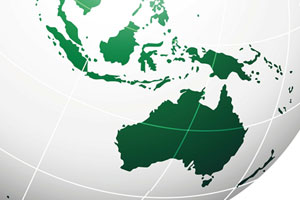
Focus on national environmental biosecurity
The decision to create an office of environmental biosecurity protection is big step forward in protecting Australia’s environment from dangerous new invasive species.

The decision to create an office of environmental biosecurity protection is big step forward in protecting Australia’s environment from dangerous new invasive species.

Contrast the government’s response to white spot in Logan River prawns to the indifference from authorities when a new environmental invader arrives.
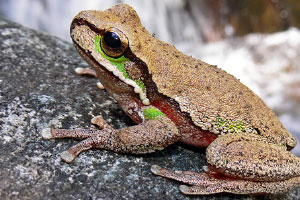
Environmental biosecurity: Do we have a body responsible for protecting Australia’s native plants and animals from new pests and diseases? In short, no. But we should.
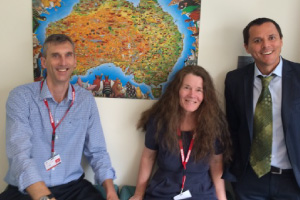
The Senate inquiry on environmental biosecurity has been useful for revealing gaping holes in Australia’s preparation for new invasive species and flushed out the views of government about our proposal for a dedicated body to prepare for invasive species.
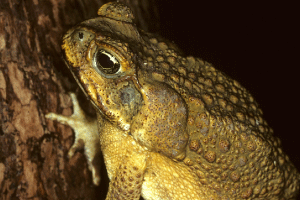
The high rate of new environmental incursions detected since 2000 suggests Australia has not yet learnt from the past. The Invasive Species Council’s submission highlights the lessons that should be learned.

With a continued high rate of new invasive species arriving and establishing in Australia, it is clear we need a more concerted focus on environmental biosecurity priorities. That is why we have proposed to the Senate inquiry the establishment of a new national body.

THIS ARTICLE HAS BEEN SUPERSEDED BY A MORE RECENT ARTICLE ON THE SAME SUBJECT PUBLISHED 4 SEP 2013 What have we heard so far about
The Australian Government must stem the rising tide of environmental pests by creating a national body tasked with harnessing the energy and brainpower of community
This submission to the Senate inquiry into the arrival and establishment of new invasive species impacting on the Australian environment shows that Australia has suffered major losses due to invasive species. It provides data and case studies that indicate ongoing, serious, and systemic flaws in environmental biosecurity and makes recommendations to strengthen environmental biosecurity to prevent the flow of new invasive species that have deadly consequences for the Australian environment.

May 2012
How can Australia stem the rising tide of environmental pests? By harnessing the energy and commitment of volunteers around the country under a new national organisation, Environment Health Australia.

The decision to create an office of environmental biosecurity protection is big step forward in protecting Australia’s environment from dangerous new invasive species.

Contrast the government’s response to white spot in Logan River prawns to the indifference from authorities when a new environmental invader arrives.

Environmental biosecurity: Do we have a body responsible for protecting Australia’s native plants and animals from new pests and diseases? In short, no. But we should.

The Senate inquiry on environmental biosecurity has been useful for revealing gaping holes in Australia’s preparation for new invasive species and flushed out the views of government about our proposal for a dedicated body to prepare for invasive species.

The high rate of new environmental incursions detected since 2000 suggests Australia has not yet learnt from the past. The Invasive Species Council’s submission highlights the lessons that should be learned.

With a continued high rate of new invasive species arriving and establishing in Australia, it is clear we need a more concerted focus on environmental biosecurity priorities. That is why we have proposed to the Senate inquiry the establishment of a new national body.

THIS ARTICLE HAS BEEN SUPERSEDED BY A MORE RECENT ARTICLE ON THE SAME SUBJECT PUBLISHED 4 SEP 2013 What have we heard so far about
The Australian Government must stem the rising tide of environmental pests by creating a national body tasked with harnessing the energy and brainpower of community
This submission to the Senate inquiry into the arrival and establishment of new invasive species impacting on the Australian environment shows that Australia has suffered major losses due to invasive species. It provides data and case studies that indicate ongoing, serious, and systemic flaws in environmental biosecurity and makes recommendations to strengthen environmental biosecurity to prevent the flow of new invasive species that have deadly consequences for the Australian environment.

May 2012
How can Australia stem the rising tide of environmental pests? By harnessing the energy and commitment of volunteers around the country under a new national organisation, Environment Health Australia.

The decision to create an office of environmental biosecurity protection is big step forward in protecting Australia’s environment from dangerous new invasive species.

Contrast the government’s response to white spot in Logan River prawns to the indifference from authorities when a new environmental invader arrives.

Environmental biosecurity: Do we have a body responsible for protecting Australia’s native plants and animals from new pests and diseases? In short, no. But we should.

The Senate inquiry on environmental biosecurity has been useful for revealing gaping holes in Australia’s preparation for new invasive species and flushed out the views of government about our proposal for a dedicated body to prepare for invasive species.

The high rate of new environmental incursions detected since 2000 suggests Australia has not yet learnt from the past. The Invasive Species Council’s submission highlights the lessons that should be learned.

With a continued high rate of new invasive species arriving and establishing in Australia, it is clear we need a more concerted focus on environmental biosecurity priorities. That is why we have proposed to the Senate inquiry the establishment of a new national body.

THIS ARTICLE HAS BEEN SUPERSEDED BY A MORE RECENT ARTICLE ON THE SAME SUBJECT PUBLISHED 4 SEP 2013 What have we heard so far about
The Australian Government must stem the rising tide of environmental pests by creating a national body tasked with harnessing the energy and brainpower of community
This submission to the Senate inquiry into the arrival and establishment of new invasive species impacting on the Australian environment shows that Australia has suffered major losses due to invasive species. It provides data and case studies that indicate ongoing, serious, and systemic flaws in environmental biosecurity and makes recommendations to strengthen environmental biosecurity to prevent the flow of new invasive species that have deadly consequences for the Australian environment.

May 2012
How can Australia stem the rising tide of environmental pests? By harnessing the energy and commitment of volunteers around the country under a new national organisation, Environment Health Australia.
Get our blog the Feral Herald delivered to your inbox.
The Invasive Species Council was formed in 2002 to seek stronger laws, policies and programs to protect nature from harmful pests, weeds and diseases.
The Invasive Species Council acknowledges the Traditional Custodians throughout Australia and their connections to land and sea. We pay our respect to their Elders past and present and extend that respect to all Aboriginal and Torres Strait Islander peoples today.
Our protected areas are being trashed, trampled, choked and polluted by an onslaught of invaders. Invasive species are already the overwhelming driver of our animal extinction rate, and are expected to cause 75 of the next 100 extinctions.
But you can help to turn this around and create a wildlife revival in Australia.
From numbats to night parrots, a tax-deductible donation today can help defend our wildlife against the threat of invasive weeds, predators, and diseases.
As the only national advocacy environment group dedicated to stopping this mega threat, your gift will make a big difference.
A silent crisis is unfolding across Australia. Every year, billions of native animals are hunted and killed by cats and foxes. Fire ants continue to spread and threaten human health. And the deadly strain of bird flu looms on the horizon. Your donation today will be used to put the invasive species threat in the media, make invasive species a government priority, ensure governments take rapid action to protect nature and our remarkable native wildlife from invasives-led extinction, death and destruction.
If you are having trouble submitting a form, please read this guide.
Please fill out the following form and one of our team will be in contact to assist as soon as possible. Please make sure to include any helpful information, such as the device you were using (computer, tablet or mobile phone) and if known, your browser (Mozilla Firefox, Chrome, Safari etc)
"*" indicates required fields
Dear Project Team,
[YOUR PERSONALISED MESSAGE WILL APPEAR HERE.]
I support the amendment to the Kosciuszko National Park Wild Horse Heritage Management Plan to allow our incredible National Parks staff to use aerial shooting as one method to rapidly reduce feral horse numbers. I want to see feral horse numbers urgently reduced in order to save the national park and our native wildlife that live there.
The current approach is not solving the problem. Feral horse numbers have rapidly increased in Kosciuszko National Park to around 18,000, a 30% jump in just the past 2 years. With the population so high, thousands of feral horses need to be removed annually to reduce numbers and stop our National Park becoming a horse paddock. Aerial shooting, undertaken humanely and safely by professionals using standard protocols, is the only way this can happen.
The government’s own management plan for feral horses states that ‘if undertaken in accordance with best practice, aerial shooting can have the lowest negative animal welfare impacts of all lethal control methods’.
This humane and effective practice is already used across Australia to manage hundreds of thousands of feral animals like horses, deer, pigs, and goats.
Trapping and rehoming of feral horses has been used in Kosciuszko National Park for well over a decade but has consistently failed to reduce the population, has delayed meaningful action and is expensive. There are too many feral horses in the Alps and not enough demand for rehoming for it to be relied upon for the reduction of the population.
Fertility control as a management tool is only effective for a small, geographically isolated, and accessible population of feral horses where the management outcome sought is to maintain the population at its current size. It is not a viable option to reduce the large and growing feral horse population in the vast and rugged terrain of Kosciuszko National Park.
Feral horses are trashing and trampling our sensitive alpine ecosystems and streams, causing the decline and extinction of native animals. The federal government’s Threatened Species Scientific Committee has stated that feral horses ‘may be the crucial factor that causes final extinction’ for 12 alpine species.
I recognise the sad reality that urgent and humane measures are necessary to urgently remove the horses or they will destroy the Snowies and the native wildlife that call the mountains home. I support a healthy national park where native species like the Corroboree Frog and Mountain Pygmy Possum can thrive.
Dear Project Team,
[YOUR PERSONALISED MESSAGE WILL APPEAR HERE.]
I support the amendment to the Kosciuszko National Park Wild Horse Heritage Management Plan to allow our incredible National Parks staff to use aerial shooting as one method to rapidly reduce feral horse numbers. I want to see feral horse numbers urgently reduced in order to save the national park and our native wildlife that live there.
The current approach is not solving the problem. Feral horse numbers have rapidly increased in Kosciuszko National Park to around 18,000, a 30% jump in just the past 2 years. With the population so high, thousands of feral horses need to be removed annually to reduce numbers and stop our National Park becoming a horse paddock. Aerial shooting, undertaken humanely and safely by professionals using standard protocols, is the only way this can happen.
The government’s own management plan for feral horses states that ‘if undertaken in accordance with best practice, aerial shooting can have the lowest negative animal welfare impacts of all lethal control methods’.
This humane and effective practice is already used across Australia to manage hundreds of thousands of feral animals like horses, deer, pigs, and goats.
Trapping and rehoming of feral horses has been used in Kosciuszko National Park for well over a decade but has consistently failed to reduce the population, has delayed meaningful action and is expensive. There are too many feral horses in the Alps and not enough demand for rehoming for it to be relied upon for the reduction of the population.
Fertility control as a management tool is only effective for a small, geographically isolated, and accessible population of feral horses where the management outcome sought is to maintain the population at its current size. It is not a viable option to reduce the large and growing feral horse population in the vast and rugged terrain of Kosciuszko National Park.
Feral horses are trashing and trampling our sensitive alpine ecosystems and streams, causing the decline and extinction of native animals. The federal government’s Threatened Species Scientific Committee has stated that feral horses ‘may be the crucial factor that causes final extinction’ for 12 alpine species.
I recognise the sad reality that urgent and humane measures are necessary to urgently remove the horses or they will destroy the Snowies and the native wildlife that call the mountains home. I support a healthy national park where native species like the Corroboree Frog and Mountain Pygmy Possum can thrive.